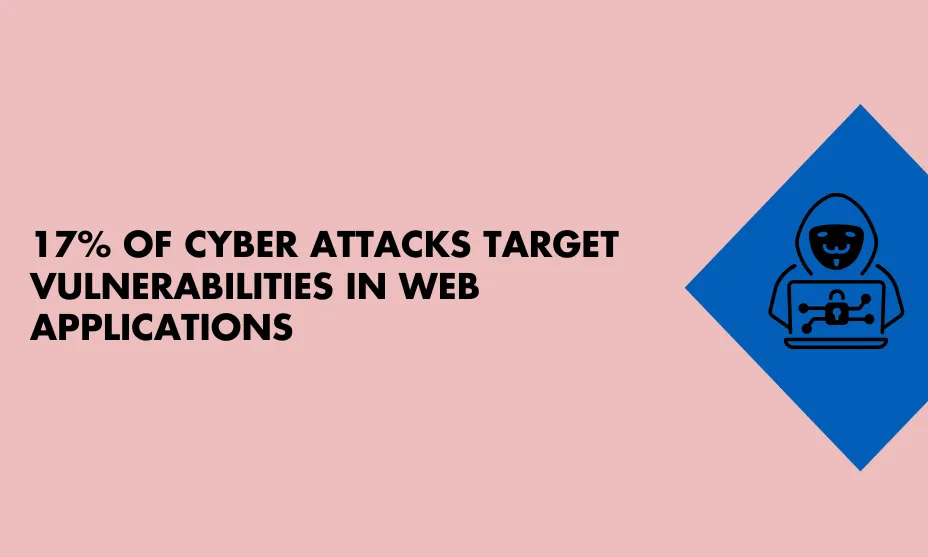Security training for app developers is crucial because they are the person who codes and builds the apps for business. However, if your app developer is not fully informed about your app it means the app is not as secure as you think for your business.
According to the source, 17% of cyber attacks target vulnerabilities in web applications. This is the reason, security should be the paramount in development processes.
So, it is important for you to train your app developers regularly and host security training sessions to keep them informed about your security protocol so as to avoid data breaches and cyber threats.

In this guide, we will discuss the importance of security training for app developers to design safe and secure apps & software products.
What is Software Development Security?
In the world of technology today, software development and security are tightly intertwined. Security should be considered at every step of creating software, forming a robust shield to protect project information and ensure top-notch IT products.
This strategy helps prevent issues like code errors, program vulnerabilities, and design flaws that could jeopardize data. But why is software security such a significant concern? Before diving into the vital concept of secure software development and its importance, we must recognize our expertise in these domains.
Creating a Secure SDLC
In the past, security was often an afterthought in software development, considered mainly during testing. However, modern methods like Agile integrate testing for secure software development at every process stage.
As hackers continually seek to exploit software vulnerabilities, prioritizing security throughout the development cycle lets developers and stakeholders identify and address security risks early.
This approach is more cost-effective and beneficial compared to last-minute fixes before release. Security testing should be ongoing, not just a reaction. Focus on strong foundations during design and development to avoid costly software vulnerabilities. Application development security, or security assurance, code reviews, and thorough penetration testing before release.

Why is Security Important in Software Development?
Implementing a secure Software Development Life Cycle (SDLC) brings several advantages to your company:
- Detecting and fixing design mistakes before they become part of the code.
- Cost savings due to early identification and resolution of security issues.
- Stakeholders recognize the value of secure approaches, not pressuring developers to sacrifice security for speedy software releases.
Security Training is a Capability
Developing strong competency management is crucial for effective training. Security training helps build a knowledgeable workforce and encourages a culture of software security across your organization. A practical approach is to offer job-specific training, like computer-based programs or e-learning. At the very least, your security training plan should require all software development team members to take an annual refresher course.
It keeps them updated on changing security trends and prevents loss of focus due to staff changes. Ongoing training and guidance are vital to maintaining team skills. They also make your investments in software security, such as code review and penetration testing, more impactful.
Security Training is a Preventative Control
To safeguard your software, your organization can implement security training for app developers as a preventive step. The realm of software security has more malicious “black hat” attackers compared to experts practicing secure development (“white hat”). With the emergence of new technologies, hackers have more avenues to exploit security gaps.
The industry is grappling with these challenges. As software security evolves, more businesses understand the need to address vulnerabilities proactively. They’re also improving at identifying and fixing weaknesses. A security training strategy that educates developers about secure coding practices helps avert common vulnerabilities. Equipping them with real-time security tools enables swift corrections during the early project phases.
Security Training is Just the Beginning
Crafting an application security training plan can shape proactive and capable security specialists within your development team. These experts become in-house security resources for your developers. Their involvement ensures the widespread adoption of secure development practices and enhances software excellence.
Security training should blend computer-based courses with practical experience for robust learning. Tailoring training to roles helps optimize learning outcomes. The curriculum should be organized progressively, accommodating various learning styles in computer-based and instructor-led sessions to build knowledge and skills effectively.
Managers Save Time and Money
Conventional training methods are costly and overwhelming, demanding extensive research to figure out relevant content for different individuals. Often, managers spend on training without clarity, randomly assigning courses.
Role-based training is a smarter approach, saving time and money. It removes uncertainty by offering ready-made learning paths for specific roles and platforms, making it effortless for managers to choose suitable training.
Developers Save Time and Money
Role-based training optimizes learning time by concentrating on specific and valuable skills. Instead of covering the entire secure application development process, developers acquire the exact knowledge needed for their role. This training is tailored to their programming language or platform, making the best use of their time. They grasp the specific security details relevant to their work without unnecessary extras.
Improved Adoption of Training
In developers’ daily routines, many tasks are vying for attention, making it challenging to dedicate time to training. Role-based training solves this by offering content directly related to their work, keeping them interested. When developers see the training’s relevance to their roles, they become motivated to complete it. This active engagement increases their confidence in their skills and better retention of what they learn.
Increase Competitiveness
With every data breach, people become more aware of privacy and security issues. As this awareness spreads, consumers, shareholders, and business partners can expect higher standards from these companies regarding their personal information. When developers undergo role-based training, their certification proves that your company takes data privacy and security seriously. This validation can build trust and show that your company is committed to safeguarding sensitive data.
Real results
While secure development training involves an upfront cost, making teams more productive pays off. They can create safer software, reducing the need for extensive testing, fixing, and responding to incidents. Role-based training, in particular, offers a better return on investment. It matches specific skills with the right people, saving time and making a bigger impact. This targeted approach ensures that the time and money spent on training significantly benefits the team and the company.
Concluding Remarks
In this fast-changing tech world, combining software development with security is crucial. Companies can prevent weaknesses, protect sensitive data, and improve software quality by intermixing security at every step of creating software.
Custom training aligns with job needs, making learning efficient. As data breaches increase, prioritizing software security becomes more urgent. Solid security training has lasting advantages in a time of big security risks, strengthening teams and business success.


